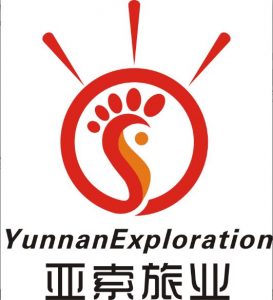
Hani Coffee in Pu’er City
Today coffee, tea and cocoa are called the world’s three major beverages. According to Records of Simao Region and Records of Simao County, in 1956, Jiangcheng Hani and Yi Autonomous County established a coffee farm in Manlaojie and introduced small coffee varieties for cultivation.
Introduction
At present, Pu ‘er City has become the largest coffee producing area and coffee trading center in China. In the process of steady development of coffee in the whole city, increasing yield per unit area and producing high-quality products, the yield per mu has reached more than 150 kilograms and the quality coffee beans have reached more than 80%. Coffee production and output value have increased continuously, and the coffee industry has become an advantageous and characteristic industry for farmers to become rich, enterprises to increase efficiency, and export to earn foreign exchange. Pu ‘er coffee industry is developing continuously.
History
Pu ‘er coffee cultivation has a history of more than 100 years. Industrialization and large-scale cultivation began in 1988. Since the 11th five-year plan, the municipal party Committee and the municipal government of pu’ er have firmly established the concept of “ecological city and green development”. they have always taken the development of characteristic biological industry and cultural tourism and health preservation industry as the main direction of pu’ er’s participation in the future global competition. they have closely focused on the strategic goal of “China’s coffee capital” and taken the coffee industry as the dominant backbone industry. the coffee industry has shown a rapid development momentum. the international brand status of pu’ er coffee has been further promoted. pu’ er has become the main coffee producing area with the largest planting area, the highest yield and the best quality in the country and the main distribution center for coffee trade.
In 2011, the city’s coffee planting area reached 439,000 mu, with a production area of 190,000 mu, a coffee output of 28,000 tons and a coffee output value of 850 million yuan. In 2012, 270,000 mu of coffee was put into production, with a coffee output of 36,500 tons and an output value of 900 million yuan. In the first half of this year, exports earned 63.6256 million US dollars. At present, there are 70 registered coffee enterprises in the city, including 12 enterprises with export qualification and 42 dehulling and processing plants. 4 deep processing plants; There are 62 professional cooperatives with 30,000 employees and more than 100,000 people in the coffee industry.
Environment
Due to its geographical location and special climate environment, the quality of Pu ‘er coffee has been recognized as a relatively good coffee in the world and favored by world-famous coffee companies. Due to the influence of subtropical monsoon climate, most areas here have no frost all the year round, no cold in winter and no hot summer, enjoying the good reputation of “green sea pearl” and “natural oxygen bar”. Pu ‘er City is 317-3370 meters above sea level, so planting coffee is especially suitable.
Product quality characteristics
External sensory characteristics: the stem is straight, with nodes on the stem; Each node has a pair of green leaves. The flowers are white, both male and female, and the full flowering period is usually from March to April. Mature fresh fruits are round red (yellow) berries. After peeling, fresh fruits usually have 2 particles. Mature period of fresh fruits usually lasts from October to February of the following year. Commercial coffee beans are light blue or light green. 2. The inherent quality index Pu ‘er coffee has good color and excellent quality, and has the unique quality characteristic of “strong and lasting aroma and slightly sour taste of fruits”. Sourness and consistency are good, with strong coffee flavor. Among them, moisture ≤12.5%, ash ≤4.2%, water extract ≥20.0%, caffeine ≤1.2%, total sugar ≥8.5%, protein ≥11.0%, crude fat ≥5.0%, crude fiber ≤35.0%, and total acid ≥0.5%. 3. Quality and safety regulations In the process of production and processing, the management and use of input fertilizers, agriculture, etc. shall be implemented with reference to “Technical Specifications for Whole Process Control of Planting Quality and Safety” and the local standard of Yunnan Province “Comprehensive Standard for Simao Small Grain Coffee” DB53/T 154.1 ~ 10-2006.
Keep reading
- Baoshan Dining
- Chuxiong Dining
- Kunming Dining
- Dehong Dining
- Diqing Dining
- Honghe Dining
- Dali Dining
- Lijiang Dining
- Lincang Dining
- Nujiang Dining
- Pu’er Dining
- Qujing Dining
- Wenshan Dining
- Xishuangbanna Dining
- Yuxi Dining
- Zhaotong Dining
Edited by Hellen He/何琴

 7 Days GolfingTour
7 Days GolfingTour
 8 Days Group Tour
8 Days Group Tour
 8 Days Yunnan Tour
8 Days Yunnan Tour
 7 Days Shangri La Hiking
7 Days Shangri La Hiking
 11 Days Yunnan Tour
11 Days Yunnan Tour
 6 Days Yuanyang Terraces
6 Days Yuanyang Terraces
 11 Days Yunnan Tour
11 Days Yunnan Tour
 8 Days South Yunnan
8 Days South Yunnan
 7 Days Tea Tour
7 Days Tea Tour
 8 Days Muslim Tour
8 Days Muslim Tour
 12 Days Self-Driving
12 Days Self-Driving
 4 Days Haba Climbing
4 Days Haba Climbing
 Tiger Leaping Gorge
Tiger Leaping Gorge
 Stone Forest
Stone Forest
 Yunnan-Tibet
Yunnan-Tibet
 Hani Rice Terraces
Hani Rice Terraces
 Kunming
Kunming
 Lijiang
Lijiang
 Shangri-la
Shangri-la
 Dali
Dali
 XishuangBanna
XishuangBanna
 Honghe
Honghe
 Kunming
Kunming
 Lijiang
Lijiang
 Shangri-la
Shangri-la
 Yuanyang Rice Terraces
Yuanyang Rice Terraces
 Nujiang
Nujiang
 XishuangBanna
XishuangBanna
 Spring City Golf
Spring City Golf
 Snow Mountain Golf
Snow Mountain Golf
 Stone Mountain Golf
Stone Mountain Golf




